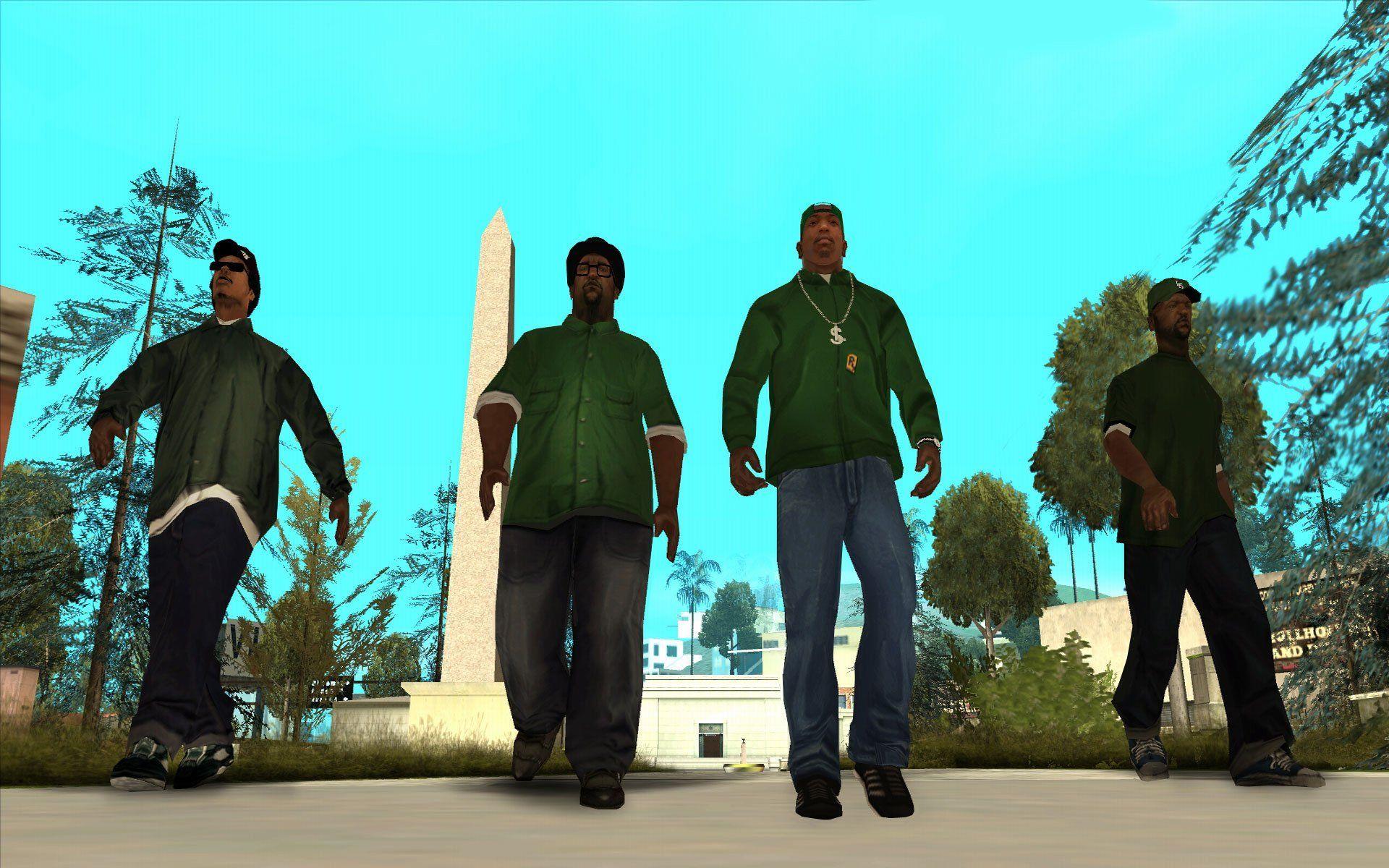Table of Contents Show
In 2004, Rockstar Games released the seventh installation of the “Grand Theft Auto” series, “Grand Theft Auto: San Andreas.” The game was a critical success, with many praising the game’s story-line as one of the best game narratives ever. The game’s main character, CJ Johnson, is still praised as one of the best Black characters in video game history. This critical success is often credited to Rockstar Games’ decision to have LA-based rapper DJ Pooh co-write for the game. Since the in-game city of Los Santos is based in Los Angeles, DJ Pooh’s experience as a Black man from the city can be seen as crucial to strengthening the story in “Grand Theft Auto: San Andreas.”
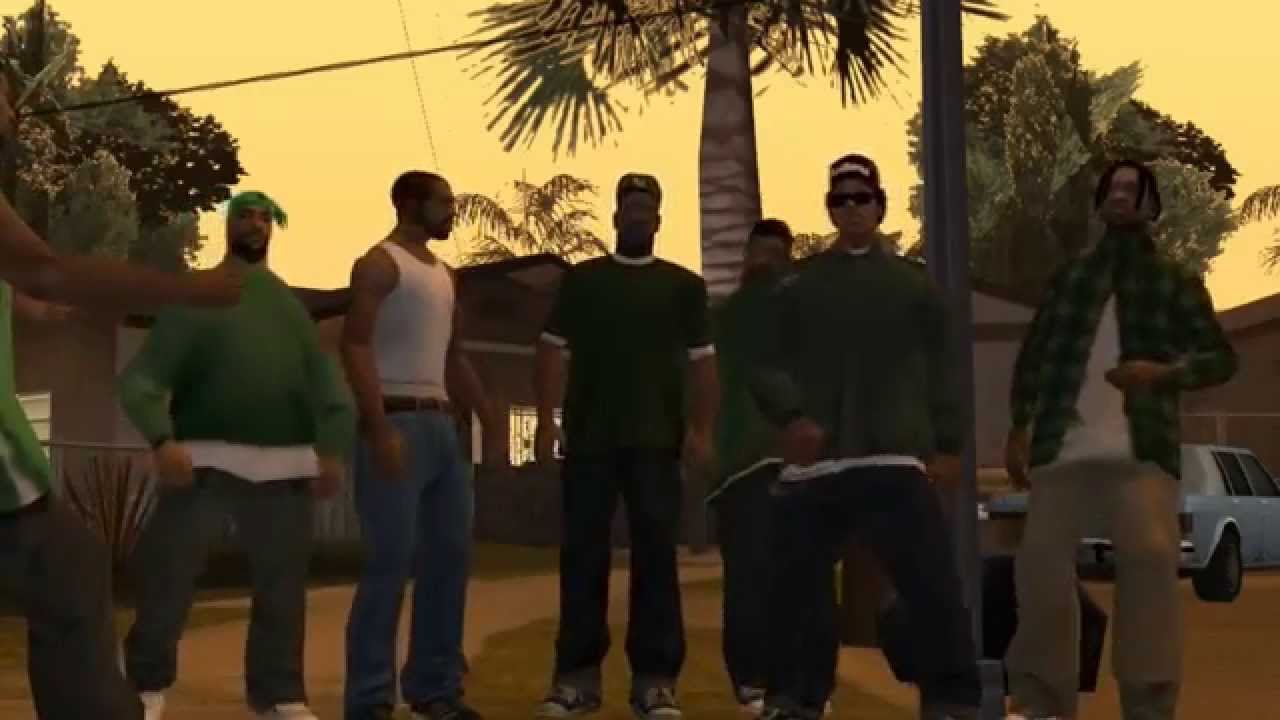
Now, seventeen years later, the #OwnVoices Movement has swept the writing scene. What started as a book list tweeted by YA author Corrine Duyvis now is a widespread call for publishers and storytellers to prioritize stories about characters in a marginalized group written by people in that same group. “Grand Theft Auto: San Andreas” can be considered one of the gaming industry’s first journeys into something that can fit into the #OwnVoices Movement. However, while DJ Pooh’s writing helped flesh out CJ and some of the other Black characters, the lack of diverse representation on the otherwise white male writing team failed to convey other characters of color in the game properly.
The Success Of Grove Street
“Grand Theft Auto: San Andreas” follows CJ Johnson as he returns home to Los Santos in the wake of his mother’s murder. Once home, he rejoins the Grove Street Families, his neighborhood gang. The gang is composed of Big Smoke, Ryder, OG Loc, and leader Sweet Johnson, CJ’s older brother. While each gang member fills a character archetype, DJ Pooh’s writing fleshes each one out, giving them weaknesses and motivations in a way other games about gang members might not have.
Carl “CJ” Johnson
CJ Johnson returns home to Los Santos after living on the east coast upon the news that his mother was murder in a drive-by shooting. Once home, he is immediately antagonized by local corrupt police officers and then thrown back into the fray of his former life. His childhood friends and older brother are glad to see CJ home but still do not readily accept him back into the Grove Street Families gang. Instead, CJ spends the beginning portion of “Grand Theft Auto: San Andreas,” proving his loyalty to his neighborhood. While it would be expected for CJ to want to prove himself in order to save his reputation as a gangster, the game makes it clear that CJ’s motivations for rejoining the gang go beyond that. CJ rejoins his gang for noble and righteous reasons: to protect his home neighborhood from cocaine selling rival gangs and to ultimately find his mother’s murderer.
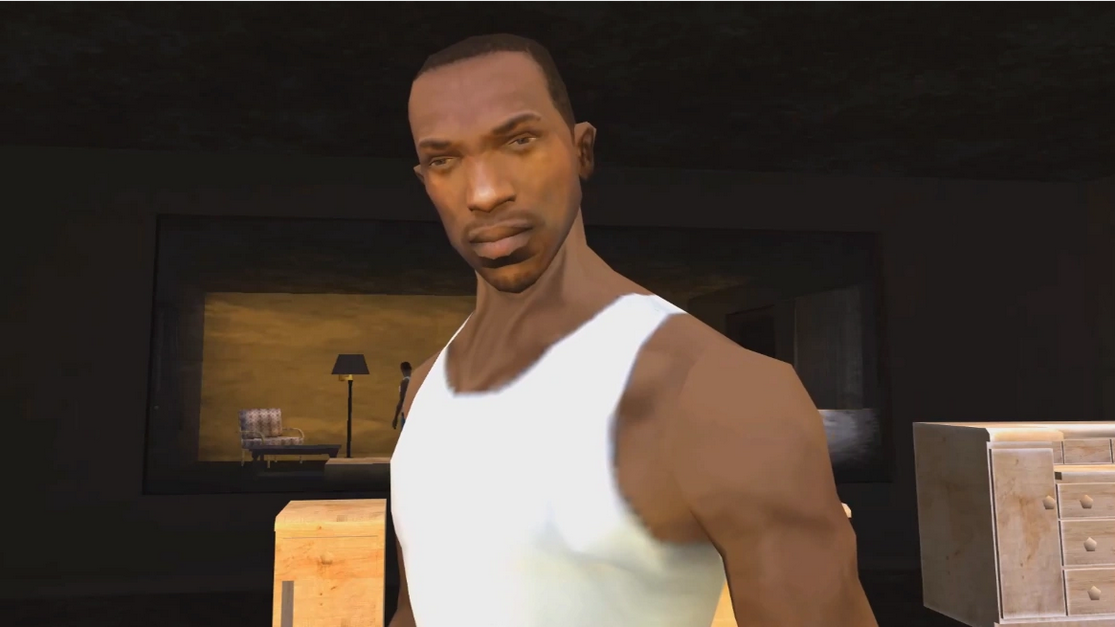
This motivation goes deeper once his backstory is revealed. Five years before the events of “Grand Theft Auto: San Andreas,” CJ is witness to the murder of his younger brother, and it is implied that CJ did not stop the attack. His relationship with the Grove Street Families deteriorates after, leading CJ to leave Los Santos. However, once he returns home, CJ goes above and beyond to help his former gang. This shows that CJ’s loyalty to his family trumps his own desire for a life outside of the gang. It also shows his righteousness. Though he is working outside of the law, he does everything he can to better protect his loved ones from hostile outsiders and bring his mother’s murderer to justice.
CJ’s character growth through the game can be attested to DJ Pooh’s belief in redemption. With the Grove Street Families accepting CJ over time, his friends reaffirming their positive relationship with him, and with CJ being able to make a name for himself outside of gang life by the end of “Grand Theft Auto: San Andreas,” he is redeemed from the tragedy that sent him out of Los Santos.
Grove Street Family
CJ is not the only Black character who feels fleshed out in “Grand Theft Auto: San Andreas.” The rest of the main branch of the Grove Street Families are written with their own motivations and vices, instead of being side characters that just move the plot along. The most prominent of these characters are CJ’s older brother, Sweet, and his childhood friend, Big Smoke.
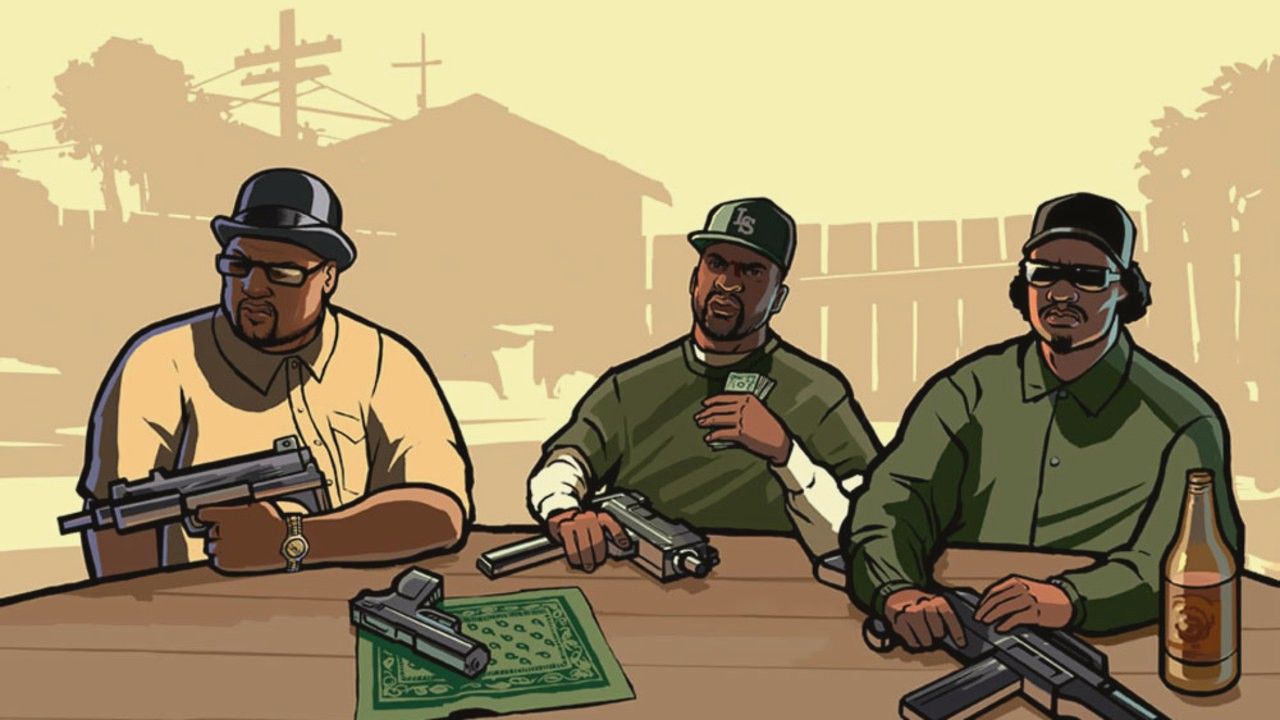
Sean “Sweet” Johnson is the eldest brother of the Johnson family and leader of the Grove Street Families gang. Throughout “Grand Theft Auto: San Andreas,” he is shown to be jaded and distrustful of anything or anyone that isn’t affiliated with his gang. This jadedness comes from the experiences of losing his youngest brother to rival gangs, as well as being present during the drive-by that killed his mother. Those experiences pushed him to want to protect his home through any means necessary: either by keeping anyone that isn’t from Grove Street out or by raiding rival gangs in order to cut their strength. However, while this protectiveness can be noble, it often goes too far.
Sweet is shown to be extremely prejudiced against the Latino-American community. He has a negative reaction to his sister dating Cesar Vialpando, leader of the Varrios Los Aztecas. This prejudice makes Sweet send CJ with their sister in order to “keep her safe.” Throughout “Grand Theft Auto: San Andreas,” it is implied that Sweet begins to see Cesar as an ally, and he seems to drop the prejudice.
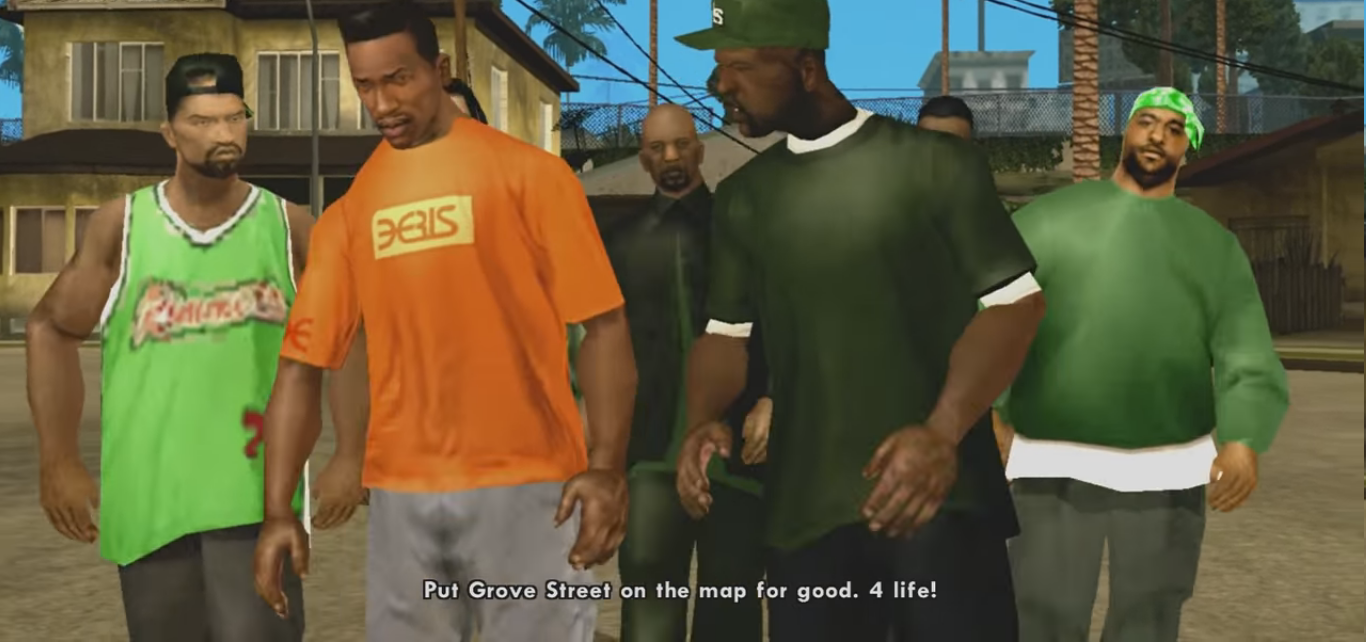
Melvin “Big Smoke” Harris is CJ’s childhood friend and fellow member of the Grove Street Families. Big Smoke is the only character (besides CJ’s sister, Kendl) that warmly welcomes CJ back home, setting him up as a kind friend. While he is sometimes used as the fat comedic relief, he is also shown to be deeply interested in philosophy. He uses this interest in philosophy as a cover for his interest in chasing money. He states he can understand why the rival gangs are selling cocaine at the beginning of “Grand Theft Auto: San Andreas,” as it’s a fast way to make money and gain power. However, it is revealed that Big Smoke himself has bought into drug dealing, as he helps corrupt police officers bring the cocaine into the neighborhood. This money chasing mentality is also revealed to be why CJ’s mother was murdered: Big Smoke is implied to have participated in the shooting to bring down the Grove Street Families and sell more cocaine.
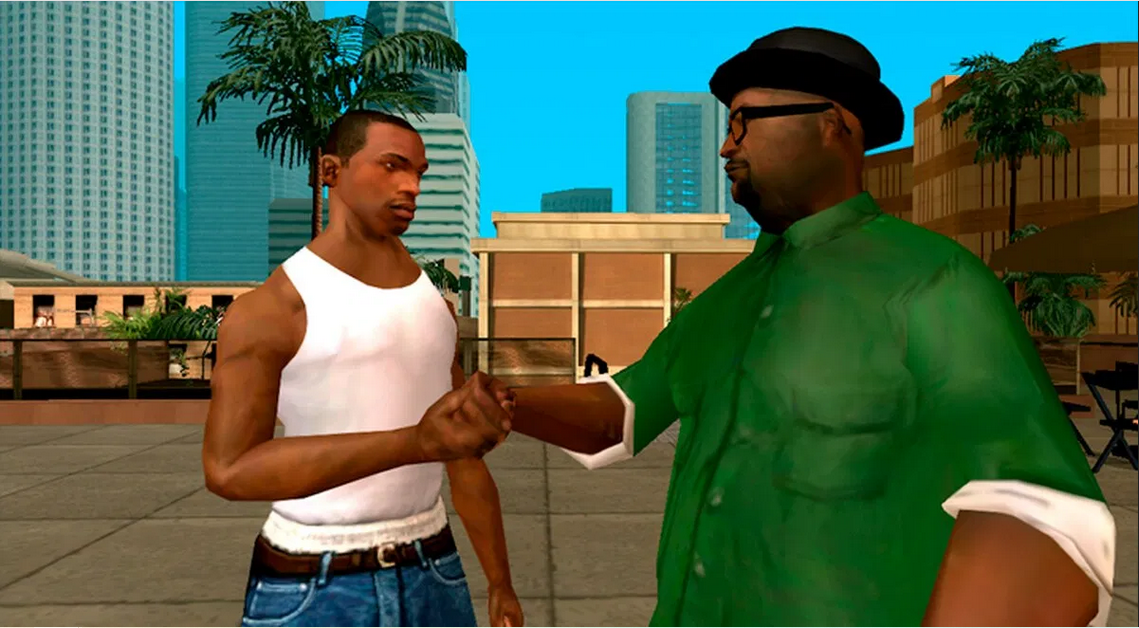
While both Sweet and Big Smoke fill some character archetypes, DJ Pooh’s involvement in “Grand Theft Auto: San Andreas” makes sure they become more than just that. Sweet isn’t just the angry big brother all of the time. He opens up and forgives CJ for leaving five years prior. Big Smoke isn’t just a walking fat joke. Both characters have reasons for their actions and attitudes, which are shown throughout the game’s narrative. When asked about the game, DJ Pooh stated that he “suggested people as characters (( Watkins, Greg. 2009. “DJ Pooh: Friday to Friday to Monday Morning.” AllHipHop. November 17, 2009. )).” This could either mean he suggested voice actors for the roles or shaped the characters based on people he knew. Either way could be seen as the reason for each Black character’s well-roundedness without relying on stereotypes often found in narratives like the one in “Grand Theft Auto: San Andreas.”
The Failing Of The Writing Team
While DJ Pooh helped flesh out the Grove Street Families gang, other characters of color within “Grand Theft Auto: San Andreas” don’t seem to have had the same luxury. These characters aren’t often fleshed out much past their racial stereotypes, unlike CJ and the rest of Grove Street. Instead, these characters aren’t given much in the way of motives, leaving them feeling flat or like jokes compared to the rest of the main cast.
The most jarring of these examples is Catalina. Catalina is introduced mid-way through “Grand Theft Auto: San Andreas” as Cesar Vialpando’s cousin, who recommends her help to CJ once Sweet ends up in jail. Throughout her involvement in the game’s narrative, she is shown to be extremely violent and malicious, hurting anyone who may stand in her way of robbing banks. On top of this, she is also extremely temperamental, with mood swings going from viciously angry to passionately in love with CJ. Catalina falls directly into the “Spicy Latina” trope.
She is quick to anger and violence while citing her rough background as the reason for this. She often berates CJ for not caring enough about their relationship but quickly calms down when she thinks he has returned her affections. Her inclusion in the narrative only seems to be there to help further the plot along, as well as to make several sexual jokes about Catalina and CJ’s relationship. Her character does not progress in the game before she dumps CJ and leaves with her new boyfriend.
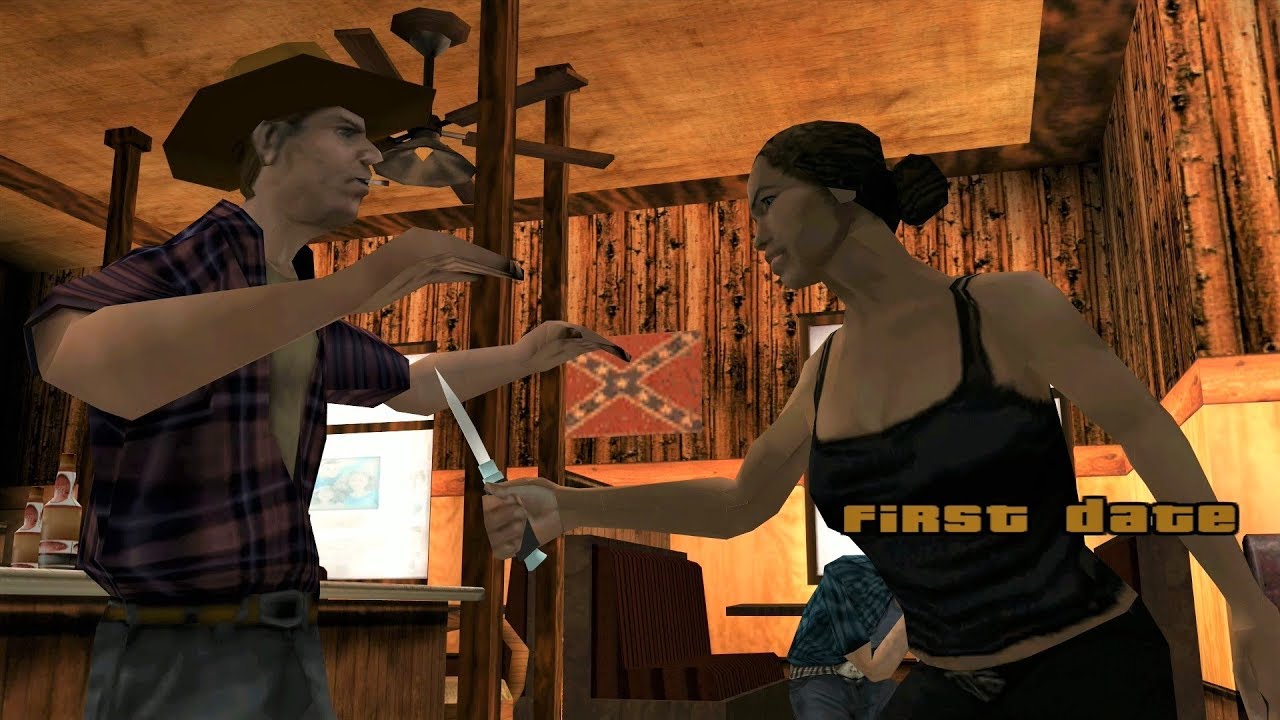
Because of how fleshed out CJ and his close friends are, Catalina feels extremely static in comparison. She has no real motivations outside of wanting more money. Her bouts of anger seem to be random, as CJ is often surprised by them. However, CJ continues to partner with her in order to get enough money for Sweet’s bail. Once it is possible for CJ to achieve that through a means that isn’t bank robbing, Catalina leaves the plot entirely. Outside of random phone calls, she is barely mentioned again after her departure. Compared to how other characters who help CJ are shown or mentioned throughout the rest of the narrative, it is striking to see how the game treats Catalina. Because of this, “Grand Theft Auto: San Andreas” fails to represent Latina women properly, as Catalina is the only Latina woman in the entire cast.
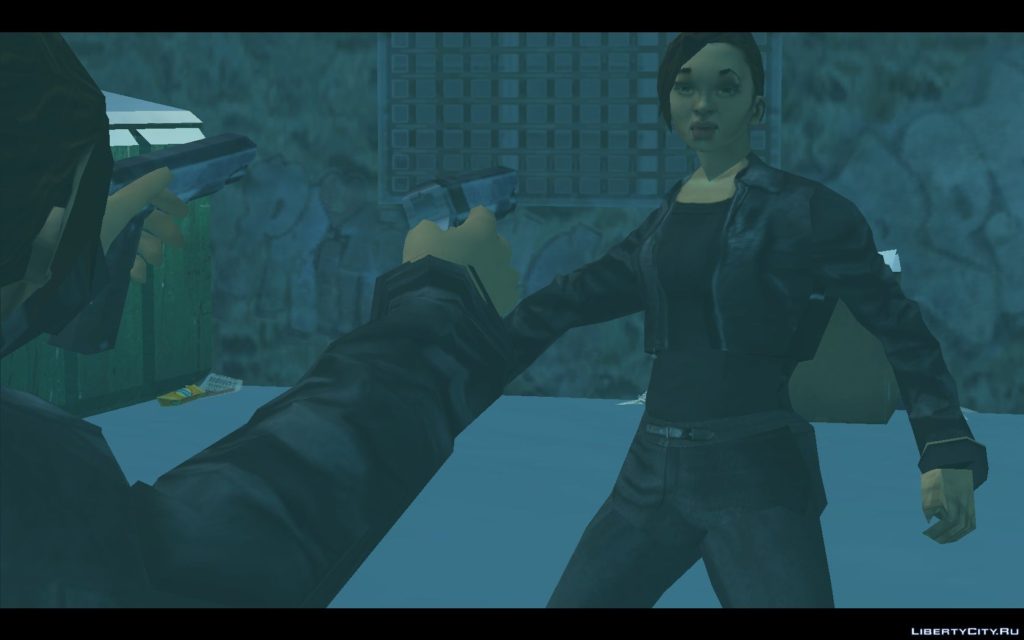
This is not to say that this failure is entirely on DJ Pooh’s involvement with the writing of the game. However, it is interesting to look at the characters who share his lived experience as a Black man from Los Angeles compared to Catalina. If DJ Pooh’s help with writing the game with Dan Houser and James Worrall lead to the critical success of CJ’s narrative, having a Latina woman on the writing team may have done the same with Catalina. Yet, there seems to have been no such help for Catalina during either of her appearances in the “Grand Theft Auto” series, as “Grand Theft Auto: San Andreas” is her second appearance in the series. In her first appearance in “Grand Theft Auto III,” her personality is much the same.
May “Grand Theft Auto VI” Be Better
It’s no wonder why “Grand Theft Auto: San Andreas” is still considered one of the best games ever to be released. The game’s narrative is compelling and surprising. CJ is a character with strong and relatable wants, motivations, and pitfalls. His Grove Street friends are written as a family in the making, and their involvement in CJ’s character arc is refreshing. Even more, close to twenty years later, it is apparent that DJ Pooh and the rest of the team brought everything they had to the writing-table.
This is even more apparent now in the age of the #OwnVoices Movement, as compelling and authentic narrative stories surrounding marginalized people come from marginalized authors are highlighted more. However, in the case of characters like Catalina, the writing team’s everything was not enough to avoid the dangers of stereotyping. Now, gamers can only hope the next installment of “Grand Theft Auto” is more diverse than its predecessor, both in characters and writers.
